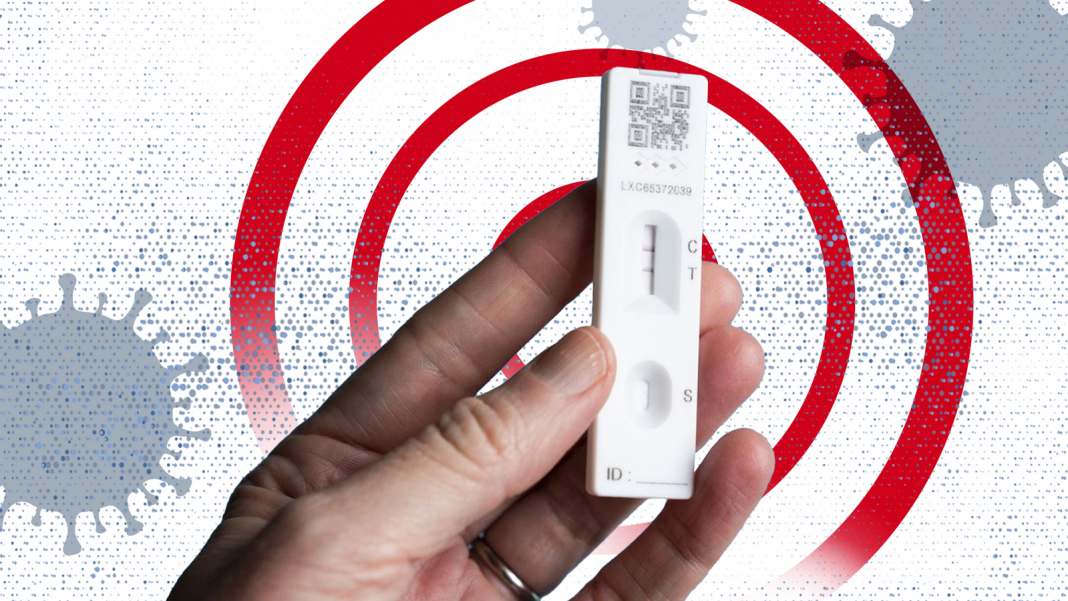A new sub-lineage of the Omicron COVID variant now makes up one in seven cases in the UK.
EG.5 and EG.5.1 are descendants of Omicron, which was first detected in South Africa in late-2021 before becoming widespread in the UK.
This week the World Health Organisation (WHO) designated EG.5 as a ‘variant of interest’ after it was reported in 51 countries.
Here Sky News looks at it in more detail.
When was it discovered?
EG.5 was first detected on 17 February but was given ‘variant under monitoring’ status by WHO on 19 July following a spike in cases, particularly in Asia. As of 7 August it was a ‘variant of interest’.
Most reported cases are still in China (30.6%), followed by the US (18.4%), South Korea (14.1%) and Japan (11.1%).
According to the latest UK Health Security Agency (UKHSA) data, it is now the second most prevalent variant making up 11.8% of UK cases as of 27 July. As of 4 August, it represented one in seven UK infections.
The majority of cases are still the Arcturus strain, another Omicron sub-variant that emerged earlier in the year.
On a global scale, WHO claims EG.5 makes up 17.4% of infections as of 23 July, which it says is a “notable rise” on the last time it collected data on 25 June.
What are the symptoms?
According to the ZOE health app, the symptoms of EG.5 and EG.5.1, are similar to other Omicron sub-variants.
These include:
- Runny or blocked nose
- Headache
- Fatigue
- Sore throat
- Sneezing
How worried should we be?
WHO has said that on the evidence available the “public health risk posed by EG.5 is low at global level” and similar to the other Omicron sub-variants we’ve seen in the past two years.
They haven’t found an increase in disease severity compared to ones we’ve seen previously either.
But it does have a growth advantage and immune escape properties, which means it can evade natural or vaccine-based immunity.
It predicts that: “Due to its growth advantage and immune escape properties, EG.5 may cause a rise in case incidence and become dominant in some countries or even globally.”
There have been increases in COVID hospitalisations in some Asian countries where EG.5 is circulating but there is no evidence of a link between the sub-variant and any spike in hospital admissions.
Professor Francois Balloux, an expert in computational systems biology and director of the UCL Genetics Institute, said it still “only plays a minor role in the current increase in cases”.
Read more:
Last orders for takeaway pints
Sick cats begin COVID treatment in Cyprus
Man ordered not to approach Matt Hancock
He says this is “driven primarily by the weather”, which has prevented people from spending more time outdoors in recent weeks, and “constantly waning immunity” from booster jab campaigns.
“There is nothing that feels particularly concerning about EG.5.1, relative to the many other Omicron sub-variants in circulation,” he said.
Biologist Professor T. Ryan Gregory who coined the nickname “Eris” for EG 5.1 on social media, adds that it “isn’t super notable in terms of specific mutations” and “is not even the fastest XXB (Omicron) variant”.
He added it is “one to watch even if it’s not expect to cause a large wave”.
But virologist Professor Stephen Griffin wrote on X, formerly known as Twitter, that “not being more severe than existing strains is not the same as not being severe”.
He warned that “individual risks scales by prevalence” and stressed the continuing risks of Long COVID and lack of immunity in the super clinically vulnerable.
Please use Chrome browser for a more accessible video player
2:03
Why UK COVID rates are rising again
What about COVID more generally?
Generally COVID cases are on the rise. Although universal testing and routine reporting of cases has ended in the UK, hospital admissions remain an indication of prevalence.
Currently the COVID hospitalisation rate is 1.97 per 100,000 people – compared to 1.17 a week earlier.
People aged 85 and over represent the biggest age group in hospital as they have throughout the pandemic.
According to UKHSA “overall levels of admission remain extremely low and we are not currently seeing a similar increase in ICU admission”.







